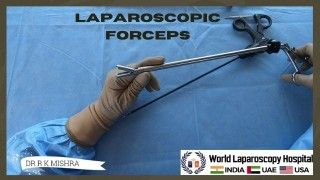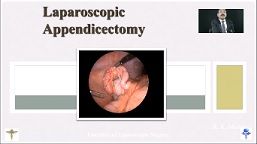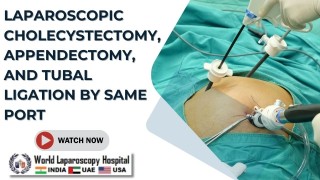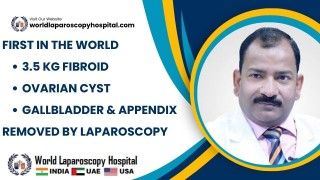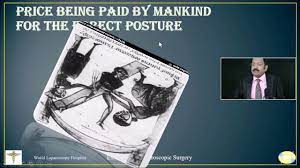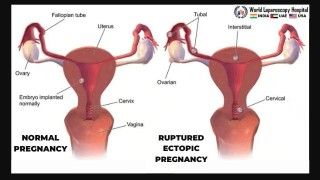Minimally invasive relief for Hyperhidrosis: Endoscopic Thoracic Sympathectomy(ETS)
Add to
Share
2,337 views
Report
2 years ago
Description
Hyperhidrosis, or excessive sweating, can significantly impact a person's daily life and confidence. Fortunately, Endoscopic Thoracic Sympathectomy (ETS) provides a promising solution for those seeking relief from this condition. ETS is a minimally invasive surgical procedure that targets the sympathetic nerves responsible for triggering excessive sweating. By accessing these nerves through small incisions and using specialized tools, the surgeon can interrupt their signals, effectively reducing sweating in the treated areas. This procedure offers long-lasting relief and can greatly improve the quality of life for individuals suffering from Hyperhidrosis. Excessive sweating, known as hyperhidrosis, can be a challenging condition that affects various aspects of daily life, causing discomfort, embarrassment, and a significant impact on self-esteem. Fortunately, individuals dealing with hyperhidrosis can find relief through an innovative surgical procedure known as Endoscopic Thoracic Sympathectomy (ETS). ETS is a minimally invasive surgical technique that targets the sympathetic nerves responsible for stimulating excessive sweating. The procedure involves the use of an endoscope, a thin, flexible tube with a camera and surgical instruments, which allows the surgeon to visualize and access the sympathetic nerves in the chest cavity. During the ETS procedure, small incisions are made in the chest, typically under the armpits. The surgeon inserts the endoscope and carefully identifies the targeted sympathetic nerves responsible for triggering sweat production. These nerves are then selectively interrupted or removed, effectively disrupting the signals that lead to excessive sweating. One of the key advantages of ETS is its precision and minimal invasiveness. The procedure is typically performed under general anesthesia, and the use of small incisions helps minimize scarring and post-operative discomfort. Additionally, the endoscopic approach allows for enhanced visualization, accuracy, and reduced trauma to surrounding tissues. ETS has been proven to provide long-lasting relief for hyperhidrosis, particularly in the areas targeted during the surgery, such as the hands, underarms, or face. Many individuals experience a significant reduction in sweating immediately after the procedure, leading to a considerable improvement in their quality of life. They no longer have to worry about embarrassing sweat marks or the need for constant adjustments to manage their condition. It's important to note that ETS is typically considered after other conservative treatment options, such as topical medications or antiperspirants, have been unsuccessful. The decision to undergo ETS should be made in consultation with a qualified healthcare professional who specializes in the treatment of hyperhidrosis. As with any surgical procedure, ETS does carry some risks, such as compensatory sweating in other areas of the body, known as compensatory hyperhidrosis. However, the benefits of reduced sweating often outweigh the potential risks, and many individuals find the overall outcome of ETS to be highly satisfactory. In addition to the physical relief from excessive sweating, ETS can have a profound positive impact on an individual's mental and emotional well-being. It can boost self-confidence, improve social interactions, and enhance overall quality of life. Engaging in activities without the constant worry and discomfort associated with hyperhidrosis can open up new opportunities and allow individuals to fully embrace their lives. In summary, Endoscopic Thoracic Sympathectomy (ETS) offers a reliable and minimally invasive solution for individuals seeking relief from hyperhidrosis. This procedure selectively targets the sympathetic nerves responsible for excessive sweating, providing long-lasting results and significantly improving the quality of life for those affected by this condition. Through careful evaluation and consultation with a healthcare professional, individuals can determine if ETS is the right treatment option for their specific case of hyperhidrosis. ETS (Endoscopic Thoracic Sympathectomy) provides a lasting solution for individuals struggling with hyperhidrosis, a condition characterized by excessive sweating. This advanced surgical procedure offers significant relief by targeting the sympathetic nerves responsible for triggering sweat production. During ETS, small incisions are made in the chest, allowing the insertion of a specialized endoscope. The endoscope provides a clear view of the targeted sympathetic nerves, which are selectively interrupted or removed. By disrupting the communication between these nerves and the sweat glands, ETS effectively reduces or eliminates excessive sweating in the treated areas. One of the notable benefits of ETS is its minimally invasive nature, which results in smaller incisions, reduced scarring, and a faster recovery compared to traditional open surgery. Additionally, the procedure can be performed on an outpatient basis, allowing patients to return home on the same day. ETS has shown excellent outcomes in treating various types of hyperhidrosis, including excessive sweating in the hands, underarms, face, and other areas. Many individuals experience a remarkable improvement in their quality of life, as they no longer have to constantly worry about sweat-soaked clothing, social discomfort, or limitations in their daily activities. While ETS offers significant benefits, it's essential to consult with a skilled healthcare professional to determine the suitability of the procedure for individual cases. They will assess the severity of hyperhidrosis, explore non-surgical treatment options, and discuss the potential risks and benefits of ETS. Compensatory sweating, which is sweating that occurs in other areas of the body after ETS, is a possible side effect. However, it is typically milder and more manageable compared to the original excessive sweating, and many individuals find it to be an acceptable trade-off for the relief provided by ETS. For individuals burdened by hyperhidrosis, ETS offers a life-changing solution. It can significantly improve self-confidence, enhance social interactions, and restore a sense of freedom and comfort in various settings. By addressing the root cause of excessive sweating, ETS empowers individuals to live their lives without the constant physical and emotional burden of hyperhidrosis. In conclusion, ETS is a highly effective surgical procedure that provides relief from hyperhidrosis. By targeting the sympathetic nerves responsible for excessive sweating, ETS offers lasting results and improves the overall quality of life for individuals battling with this condition. Through careful evaluation and consultation with a healthcare professional, individuals can determine if ETS is the right path to alleviating their hyperhidrosis and regaining control over their lives.
Similar Videos

